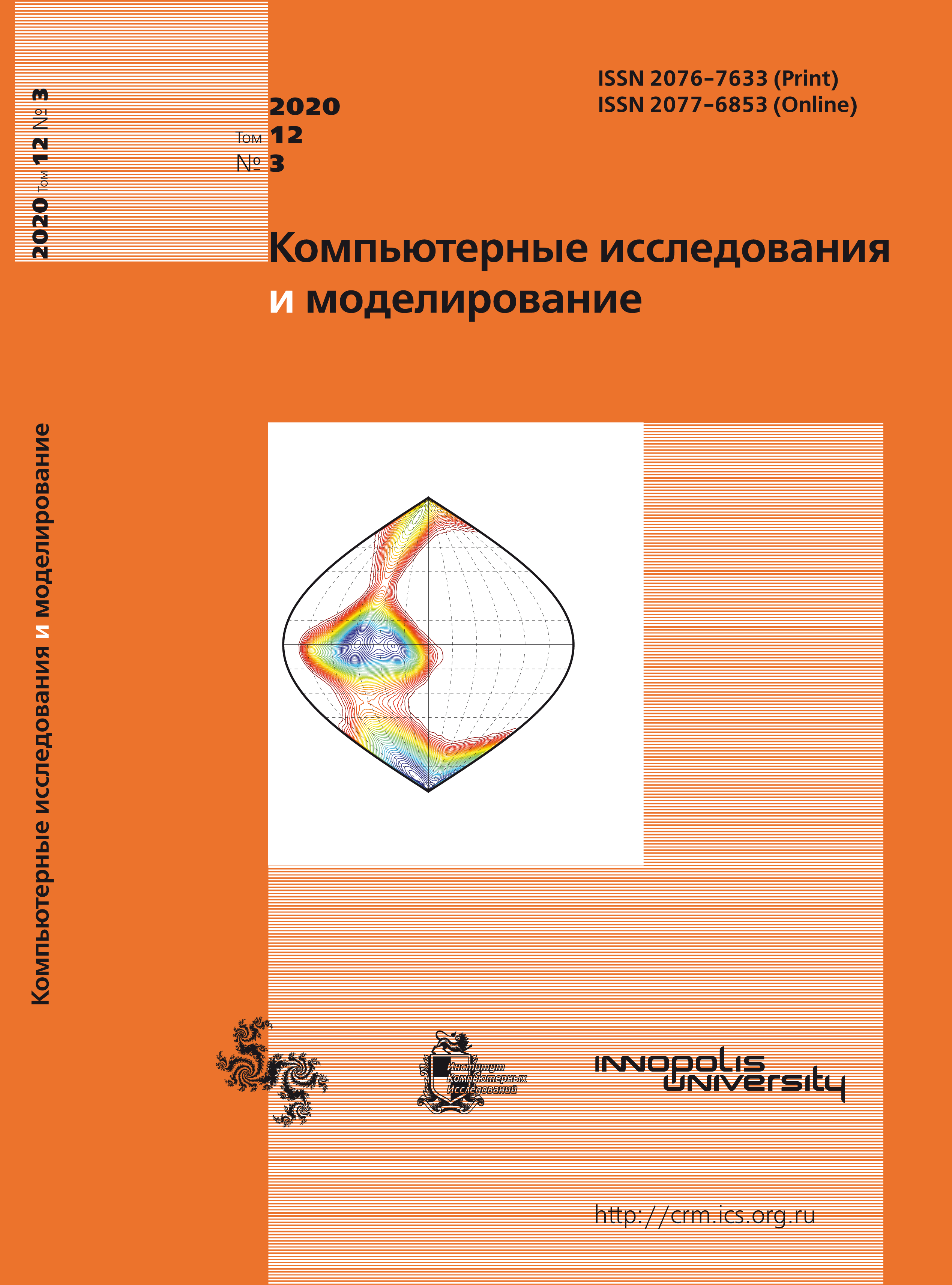All issues
- 2025 Vol. 17
- 2024 Vol. 16
- 2023 Vol. 15
- 2022 Vol. 14
- 2021 Vol. 13
- 2020 Vol. 12
- 2019 Vol. 11
- 2018 Vol. 10
- 2017 Vol. 9
- 2016 Vol. 8
- 2015 Vol. 7
- 2014 Vol. 6
- 2013 Vol. 5
- 2012 Vol. 4
- 2011 Vol. 3
- 2010 Vol. 2
- 2009 Vol. 1
Computer simulation of the process soil treatment by tillage tools of soil processing machines
 pdf (1596K)
pdf (1596K)
The paper analyzes the methods of studying the process of interaction of soil environments with the tillage tools of soil processing machines. The mathematical methods of numerical modeling are considered in detail, which make it possible to overcome the disadvantages of analytical and empirical approaches. A classification and overview of the possibilities the continuous (FEM — finite element method, CFD — computational fluid dynamics) and discrete (DEM — discrete element method, SPH — hydrodynamics of smoothed particles) numerical methods is presented. Based on the discrete element method, a mathematical model has been developed that represents the soil in the form of a set of interacting small spherical elements. The working surfaces of the tillage tool are presented in the framework of the finite element approximation in the form of a combination of many elementary triangles. The model calculates the movement of soil elements under the action of contact forces of soil elements with each other and with the working surfaces of the tillage tool (elastic forces, dry and viscous friction forces). This makes it possible to assess the influence of the geometric parameters of the tillage tools, technological parameters of the process and soil parameters on the geometric indicators of soil displacement, indicators of the self-installation of tools, power loads, quality indicators of loosening and spatial distribution of indicators. A total of 22 indicators were investigated (or the distribution of the indicator in space). This makes it possible to reproduce changes in the state of the system of elements of the soil (soil cultivation process) and determine the total mechanical effect of the elements on the moving tillage tools of the implement. A demonstration of the capabilities of the mathematical model is given by the example of a study of soil cultivation with a disk cultivator battery. In the computer experiment, a virtual soil channel of 5×1.4 m in size and a 3D model of a disk cultivator battery were used. The radius of the soil particles was taken to be 18 mm, the speed of the tillage tool was 1 m/s, the total simulation time was 5 s. The processing depth was 10 cm at angles of attack of 10, 15, 20, 25 and 30°. The verification of the reliability of the simulation results was carried out on a laboratory stand for volumetric dynamometry by examining a full-scale sample, made in full accordance with the investigated 3D-model. The control was carried out according to three components of the traction resistance vector: $F_x$, $F_y$ and $F_z$. Comparison of the data obtained experimentally with the simulation data showed that the discrepancy is not more than 22.2%, while in all cases the maximum discrepancy was observed at angles of attack of the disk battery of 30°. Good consistency of data on three key power parameters confirms the reliability of the whole complex of studied indicators.
Copyright © 2020 Lysych M.N.
Indexed in Scopus
Full-text version of the journal is also available on the web site of the scientific electronic library eLIBRARY.RU
The journal is included in the Russian Science Citation Index
The journal is included in the RSCI
International Interdisciplinary Conference "Mathematics. Computing. Education"






